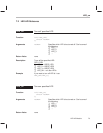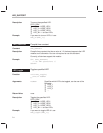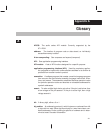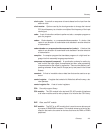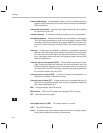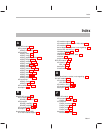
Glossary
A-4
device ID: Configuration register that identifies each peripheral component
interconnect (PCI).
digital signal processor (DSP): A semiconductor that turns analog sig-
nals—such as sound or light—into digital signals, which are discrete or
discontinuous electrical impulses, so that they can be manipulated.
DIP: The DIP Switches API Module.
direct memory access (DMA): A mechanism whereby a device other than
the host processor contends for and receives mastery of the memory bus
so that data transfers can take place independent of the host.
DMA : See direct memory access.
DMA module: DMA is an API module that currently has two architectures
used on C6x devices: DMA and EDMA (enhanced DMA). Devices such
as the 6201 have the DMA peripheral, whereas the 6211 has the EDMA
peripheral.
DMA source: The module where the DMA data originates. DMA data is read
from the DMA source.
DMA transfer: The process of transferring data from one part of memory to
another. Each DMA transfer consists of a read bus cycle (source to DMA
holding register) and a write bus cycle (DMA holding register to destina-
tion).
DSK: Digital signal processor (DSP) starter kit. Tools and documentation
provided to new DSP users to enable rapid use of the product.
E
EDMA: Enhanced direct memory access; see EDMA module.
EDMA module: EDMA is an API module that currently has two architectures
used on C6x devices: DMA and EDMA (enhanced DMA). Devices such
as the 6201 have the DMA peripheral, whereas the 6211 has the EDMA
peripheral.
EMIF: See external memory interface; see also EMIF module.
EMIF module: EMIF is an API module that is used for configuring the EMIF
registers.
evaluation module (EVM): Board and software tools that allow the user to
evaluate a specific device.






